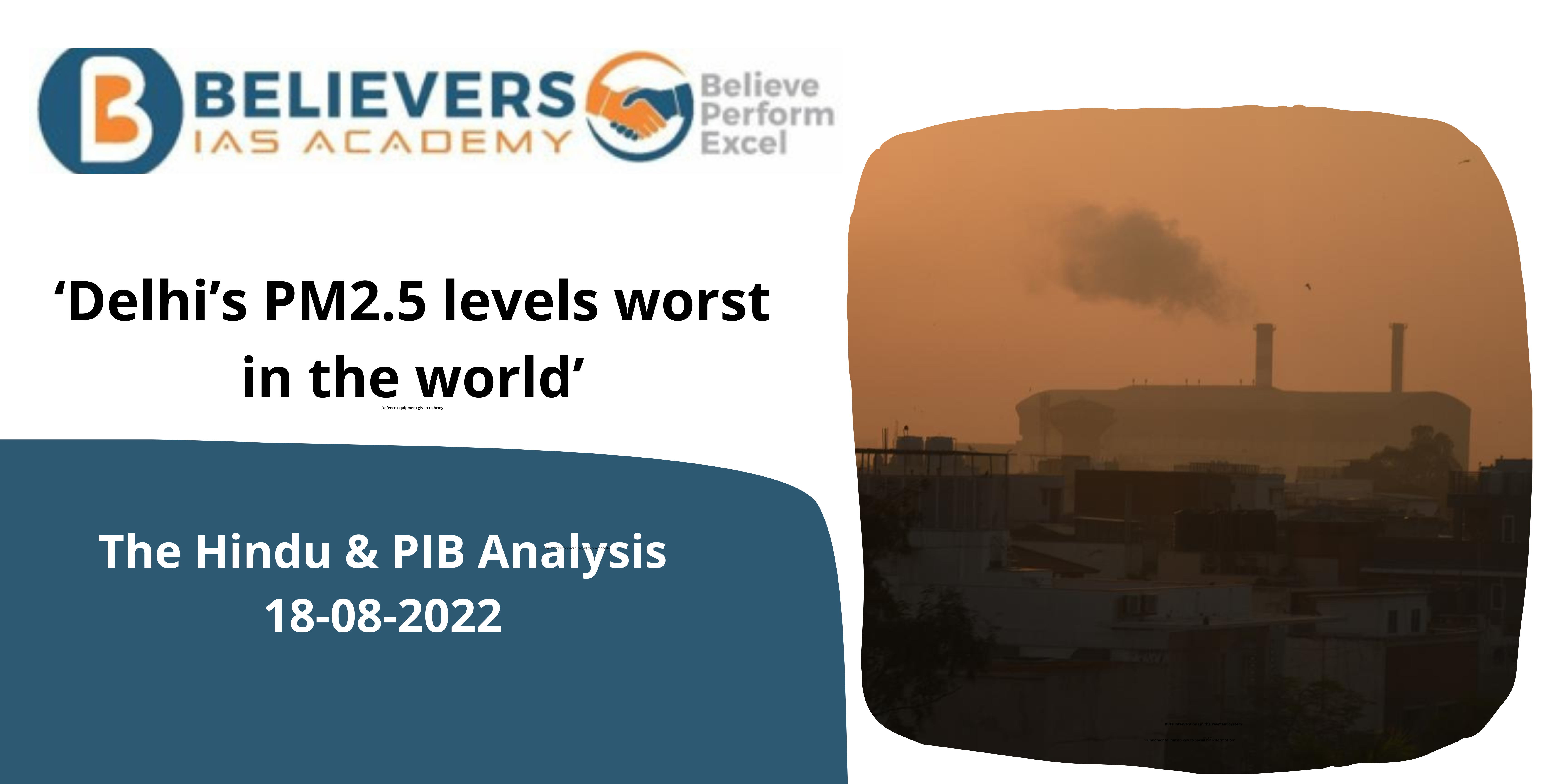‘Delhi’s PM2.5 levels worst in the world’
For Prelims
What is PM 2.5
- Particulate Matter 2.5 (PM 2.5) is a mixture of solid particles and liquid droplets found in the air, with diameters that are generally 2.5 micrometres and smaller.
- The Air Quality and Health in Cities report was released by U.S.-based Health Effects Institute analyses pollution and global health effects for more than 7,000 cities around the world. The report focuses on two of the most harmful pollutants – fine particulate matter (PM2.5) and nitrogen dioxide (NO2).
For Mains
What are the findings of the report?
- Delhi and Kolkata were ranked first and second in the list of top 10 most polluted cities when PM2.5 levels were compared, with Delhi and Kolkata reporting an average annual exposure of (relative to population) of 110 ug/m3 and 84 ug/m3 respectively.
- Exposure to PM2.5 pollution tends to be higher in cities located in low- and middle-income countries, while exposure to NO2 is high across cities in high-income as well as low- and middle-income countries.
- No Indian city appeared in the list of top 10 – or even top 20 – polluted cities when N02 levels were compared. This list saw Shanghai at the top with an average annual exposure of 41 ug/m3. Average NO2 levels for Delhi, Kolkata and Mumbai, according to the report, ranged from 20-30 ug/m3.

What are the sources of NO2 pollution?
- NO2 comes mainly from the burning of fuels in older vehicles, power plants, industrial facilities and residential cooking and heating.
- In 2019, 86% of the more than 7,000 cities analysed in the report exceeded the WHO’s 10 ug/m3 guideline for NO2, impacting about 2.6 billion people.
What are the side effects of NO2 pollution?
- Long-time exposures to elevated concentrations of NO2 may contribute to the development of asthma and potentially increase susceptibility to respiratory infections.
- NO2 and other NOx interact with water, oxygen and other chemicals in the atmosphere to form acid rain. Acid rain harms sensitive ecosystems such as lakes and forests.
What are the sources of PM 2.5?
- PM2.5 is produced by common indoor activities. Some indoor sources of fine particles are tobacco smoke, cooking, burning candles or oil lamps, and operating fireplaces and fuel-burning space heaters
Source: THE HINDU




